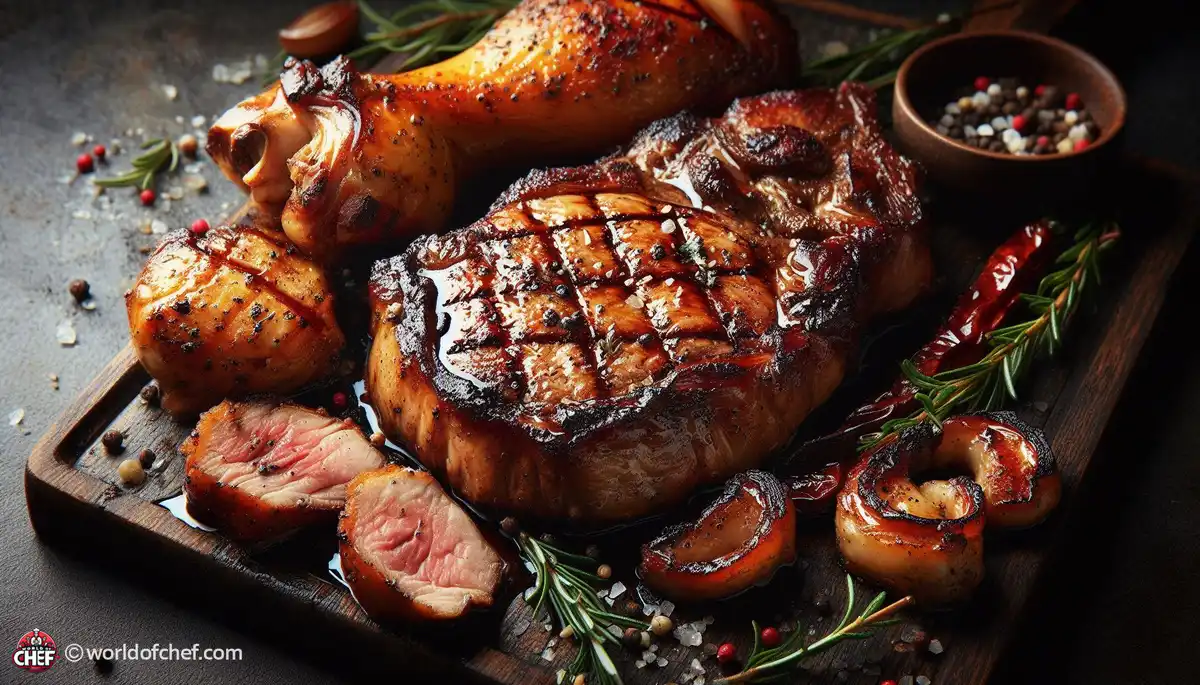
Simmering with Spices: Infusing Flavor into Your Dishes
Emery Donley - Oct 8, 2024 - 8 min read


Caramelization is more than a technique in cooking; it's an art that transforms meat into mouthwatering masterpieces. Simply put, caramelization is the browning of sugars to generate a rich flavor profile. When applied to meats, it enhances not only the taste but also the texture, making succulent bites tender and sure to titillate the taste buds.
Real appreciation of caramelization only comes through understanding the science behind it. You know, caramelization appears when natural sugars present in the protein turn into a series of complex reactions called the Maillard reaction when exposed to high heat. These sugar molecules caramelized and gave brownish-golden color with a very intense flavor for the caramalized meats. Other compounds, in this case, form hundreds of flavor compounds hence producing the irresistible aroma and taste of caramelized meat. Techniques for Success
To acquire the best caramelization technique, some of the ways are first that the outer surface of the meat be dry and then proceed. Any presence of moisture outside will interfere with browning because moisture has an adverse reaction to it; this does not support browning caramelization. Fast cooking procedures like grilling, broiling, or searing help the brown sugar content in it brown and result in caramelizing a bit on the crust.
While caramelizing, the first thing that matters is good meat quality. Use highly marbled cuts with fat to make it. The cooking will caramelize fats in the meat, which also gives flavor and juiciness. Prime cuts can be ribeye, sirloin, and tenderloin. These offer good flavor and tender mouthfeel. Moreover, take into account the thickness of the cut in this regard, thicker cuts will have a more pronounced crust while still being juicy.
It opens a whole world of flavor possibilities by experimenting with various cuts of meat. From buttery tenderness to the rich flavor of a bone-in ribeye, every cut has unique characteristics. Think about how the flavor profile of the meat complements other ingredients in your dish, and don't be afraid to get creative with seasoning and marinades to enhance the caramelization process further.
Marinating before cooking allows the meat to be extra flavored and helps to tenderize the meat, thus making it more receptive to caramelization. Use marinades that include ingredients like soy sauce, citrus juice, and herbs, which can break down proteins and infuse flavor into the meat. Alternatively, dry rubs prepared from spices, herbs, and sugar can create a flavorful crust on the meat, enhance caramelization, and add depth to the final dish.
Grilling is probably the most iconic method of caramelizing meats because of the intense heat and smoky flavor it provides. Grill your meat over high heat, and ensure the grates are clean and well-oiled to prevent sticking. Place the meat directly over the heat source and avoid turning it too frequently – allowing it to develop a caramelized crust undisturbed is key to achieving optimal flavor and texture.
Searing is another excellent technique for caramelizing your meats, especially when cooking thicker cuts, like steaks or chops. In a heavy bottom skillet or grill pan, get it to smoke point on high heat. Add the meat and allow it to just sit there undisturbed for a few minutes. This will effect a Maillard reaction and create a great caramelization of the exterior. Flip the meat and continue with the same process on the other side until it is caramelized to your desired level.
Broiling is one of the high-heat methods of cooking. It is best suited for caramelizing meat, especially those that require high cooking times. Preheat your oven broiler. Put the meat on a broiler pan or rack with the heat source very close to give excellent caramelization. You constantly monitor the meat since heat from the broiler burns it fast. You flip the meat half way through the cooking so caramelization can be effective on both sides.
Sauces and glazes set the final caramelized requirements of meats as it pours depth and complexity on their flavor. The homemade, of course, is perfect because one could shape in any flavor type he or she likes-the tangy BBQ sauce, richness of pan sauce, and sweet stickiness with any ingredient dished into that perfect sweet-and-sticky glaze that complements caramelizing.
In the making of sauces and glazes for caramelized meats, one needs to get the right proportion of sweetness and savory flavor. Overly sweet would overpower the natural flavors of the meat, while overly savory would mask the caramelization. It is more desirable to achieve a balanced flavor mix that includes ingredients such as honey, balsamic vinegar, and Dijon mustard in order to create a richer and more complex sauce.
Don't let those yummy juices and drippings go into the trash. After meats are caramelized, deglaze pan with some wine, broth, or water to give you some tasty sauce. Let this simmer until it gets thick enough to pour and drizzle over the meat for additional flavor. Sometimes, if you're serving meat over rice, those drippings can help you out by making an excellent gravy or au jus to complete the meal with a sumptuous feel.

Emery Donley - Oct 8, 2024 - 8 min read

Russell Comeaux - Oct 8, 2024 - 8 min read

Walter Backus - Oct 7, 2024 - 8 min read

Samantha Thames - Oct 7, 2024 - 6 min read